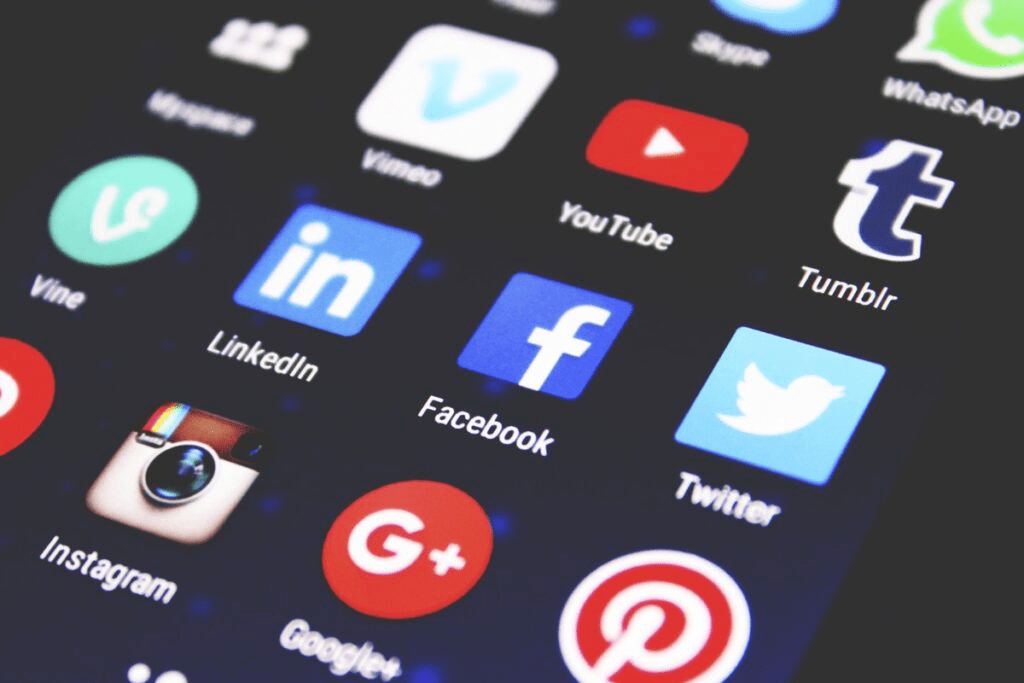Free ways to use social media and digital communications in Public Relations

Gone are the days of “spray’ and “pray.”
You know, when PR campaigns were impossible to measure and quite expensive, if measurable at all. And in all cases, the data would come in days before you can do anything about it.
Thanks to advances in technology, PR professionals now have the tools that they can only dream of back in those days. PR campaigns can now be granular and wide-ranging, timely and evergreen, as well as engaging and cost-effective all at the same time.

All these are now possible because of social media and digital communications in PR have become indispensable for several reasons:
-
- Widespread adoption: With the growing ubiquity of smartphones and internet connectivity, more and more people than ever before are using social media and digital communication tools in their daily lives. As a result, these platforms have become important channels for engaging with audiences and stakeholders.
-
- Increased reach and engagement: Social media platforms and digital communication tools offer an unparalleled opportunity for reaching and engaging with large audiences quickly and easily. By creating shareable content and leveraging influencers and online communities, PR professionals can spread their messages to a wider audience than ever before.
-
- Real-time communication: Social media and digital communication tools allow for real-time communication with audiences and stakeholders. This can be especially valuable in crisis situations, where a rapid response can make all the difference.
-
- Data and analytics: Social media platforms and digital communication tools provide a wealth of data and analytics that can be used to track and measure the success of PR campaigns and initiatives. This data can be used to inform future strategies and tactics, and to refine messaging and targeting.
-
- Cost-effective: Social media and digital communication can become a cost-effective way to reach audiences and engage with stakeholders. Compared to traditional PR tactics like print and broadcast media, social media and digital communication can be far less expensive, making them valuable tools for PR professionals working with limited budgets.

Overall, the growing importance of social media and digital communications in PR is driven by the increasing role of technology in our lives and the unprecedented reach and engagement opportunities provided by these platforms.
Leverage these tools effectively, so that you can build stronger relationships with your key stakeholders, manage your brand’s reputation, and drive the success of your PR campaigns.
B. Building and Maintaining Relationships: How social media platforms can be used to connect and engage with target audiences and key stakeholders.

Social media platforms are popular and powerful ways to connect and engage with target audiences and key stakeholders.
Social media has become more than just a way for people to stay connected. Companies, organizations, personalities and governments are using social media to engage and grow their audiences.
Here are some ways to use social media for this purpose:
-
- Identify your target audience: Before engaging with your target audience, you need to identify who they are. Research your target audience’s demographics, interests, and online behaviors to understand where they spend their time online and how they prefer to engage.
-
- Choose the right platforms: Once you know who your target audience is, you need to identify which social media platforms they use most frequently. This could include Facebook, Instagram, Twitter, LinkedIn, or other platforms.
-
- Develop a content strategy: Your social media content should be tailored to your target audience and aligned with your business goals. Create a content plan that is engaging, valuable, and relevant to your audience.
-
- Engage in conversations: Social media platforms are great for sparking conversations and building relationships. Respond to comments and messages, participate in Twitter chats and LinkedIn groups, and engage in other relevant conversations to connect with your target audience.
-
- Use paid advertising: Social media platforms offer paid advertising options that allow you to target your audience based on various criteria. This can be a powerful way to reach new audiences and engage with them.
Social media platforms offer a wealth of opportunities for businesses and organizations to connect and engage with their target audiences and key stakeholders.
By identifying your target audience, choosing the right platforms, developing a content strategy, engaging in conversations, using paid advertising, and monitoring and measuring results, you can build strong relationships and achieve your business goals.
C. Why social media and digital communications in PR are important in listening to and responding to the needs and concerns of your stakeholders

Chances are you already have a social media business page. Which means your audience knows this too.
You are probably feeling their presence through the messages, reactions, clicks and shares that they make on your social media platform. The question is, how are you responding so far?
Listening to and responding to the needs and concerns of target audiences and key stakeholders is essential for any organization that wants to build trust and credibility, and ultimately succeed in achieving its goals. Here are some reasons why:
-
- Builds trust: When an organization actively listens to and responds to the needs and concerns of its target audience and key stakeholders, it sends a message that it values their opinions and is committed to meeting their needs. This can help build trust and credibility with these groups, which is essential for building strong relationships.
-
- Improves customer satisfaction: By listening to the feedback of your customers, you can better understand their needs and preferences, and make changes to your products or services to better meet those needs. This can help improve customer satisfaction and loyalty, leading to increased customer retention and repeat business.
-
- Drives innovation: Listening to the needs and concerns of your target audience and key stakeholders can also provide valuable insights that can drive innovation and lead to new products, services, or business models that better meet their needs.
-
- Mitigates risks: By actively listening to the concerns and complaints of your target audience and key stakeholders, you can identify and address potential problems before they become bigger issues that could damage your brand’s reputation or lead to legal or financial repercussions.
-
- Helps to build a positive brand image: When an organization is seen as responsive to the needs and concerns of its target audience and key stakeholders, it can help build a positive brand image and reputation. This can make it more attractive to customers, employees, investors, and other stakeholders.

It is critical that you listen and respond to the needs and concerns of your target audiences and key stakeholders. That is if you want to build trust, improve customer satisfaction, drive innovation, mitigate risks, and build a positive brand image. Organizations that prioritize these efforts can reap significant benefits and gain a competitive edge in their industries.
D. Tips for building and maintaining strong relationships through social media and digital communications in PR

Social media can be a double-edged sword. While it breaks down walls of isolation, it can also lead to miscommunications. That’s why you don’t just wing it.
Building and maintaining strong relationships through social media and digital communications in PR requires a strategic and intentional approach. Here are some tips for doing so:
-
- Be authentic and transparent: People want to connect with real people and brands, so be transparent and authentic in your digital communication. Share stories, experiences, and insights that showcase your personality and values.
-
- Provide value: Offer valuable content and resources that are relevant and useful to your target audience. This can include blog posts, whitepapers, infographics, webinars, or other forms of content that help your audience solve problems or improve their lives.
-
- Listen and respond: Actively listen to your target audience and respond to their feedback, questions, and concerns. This demonstrates that you value their input and are committed to meeting their needs.
-
- Engage in conversations: Social media is an excellent platform for sparking conversations and building relationships. Engage with your audience through comments, direct messages, and other social media interactions.
-
- Use a consistent voice and tone: Develop a consistent voice and tone for your digital communication that reflects your brand’s personality and values. This helps to build trust and recognition with your target audience.
-
- Build a community: Create a sense of community around your brand by encouraging conversation, sharing user-generated content, and highlighting the achievements and successes of your audience.
-
- Monitor and analyze your performance: Regularly monitor your social media analytics to understand how your content and engagement strategies are performing. Use this data to refine your approach and make adjustments as needed.

Building and maintaining strong relationships through social media and digital communications in PR requires being authentic and transparent, providing value, listening and responding, engaging in conversations, using a consistent voice and tone, building a community, and monitoring and analyzing your performance. By prioritizing these efforts, you can build strong relationships with your target audience and achieve your business goals.
E. Amplifying Messages and Campaigns: How social media can be used to amplify the reach and impact of PR campaigns and messages

Social media and digital communications in PR have added a whole new dimension to how campaigns should be done. It basically gave the PR professional new powers.
People who are connected to the Internet, which is everyone. Can now be targeted based on the behavior and demographics that brands are looking to engage.
Social media is a powerful tool for amplifying the reach and impact of PR campaigns and messages. Here are some ways to use social media to achieve this:
-
- Use social media to distribute press releases and media coverage: Social media platforms offer an excellent way to distribute press releases and media coverage. You can share links to articles or blog posts on your social media profiles and include relevant hashtags to increase visibility.
-
- Leverage social media influencers: Social media influencers have large followings and can help to amplify your PR campaigns and messages. You can partner with influencers who align with your brand values and messaging to reach a wider audience.
-
- Use paid social media advertising: Paid social media advertising can be an effective way to target your audience and promote your PR campaigns and messages. You can use sponsored posts or promoted tweets to increase visibility and engagement.
-
- Participate in relevant social media conversations: Social media platforms offer opportunities to participate in relevant conversations and build relationships with your target audience. You can participate in Twitter chats, LinkedIn groups, or other social media conversations to share your PR messages and build brand awareness.
-
- Create visual content: Visual content is more engaging and shareable on social media platforms. You can create infographics, videos, or other visual content to promote your PR campaigns and messages.

Social media can be a powerful tool for amplifying the reach and impact of PR campaigns and messages. You can increase visibility and engagement and achieve your PR objectives if you’re strategic about it by doing the things that we mentioned.
F. Monitoring and Measuring Success: How social media platforms can provide valuable data and analytics for measuring the success of PR campaigns and initiatives
We always say if it’s not measurable, it’s not achievable.
Measurements tell you where you are, where you’ve been and where you are going. It’s a map.
This is another power of social media and digital communications in PR. Social media platforms provide a wealth of data and analytics that can be used to measure the success of PR campaigns and initiatives. Here are some of the ways social media analytics can be used to measure PR success:
-
- Follower and engagement metrics: Social media platforms provide follower and engagement metrics that can be used to measure the reach and impact of PR campaigns. By tracking metrics such as likes, shares, comments, and followers, you can measure the engagement level of your audience and gauge the success of your campaigns.
-
- Audience demographics: Social media platforms provide valuable audience demographic data, including age, gender, location, and interests. This information can be used to better understand your target audience and create content that resonates with them.
-
- Referral traffic: Social media analytics can help you track referral traffic to your website or other online assets. By tracking the source of website traffic, you can determine which social media platforms are driving the most traffic and adjust your strategy accordingly.
-
- Content performance: Social media analytics can be used to measure the performance of individual content pieces, such as blog posts, videos, or infographics. By tracking engagement metrics for each piece of content, you can determine which types of content are resonating with your audience and adjust your content strategy accordingly.
-
- Influencer performance: Social media analytics can also be used to track the performance of influencer campaigns. By measuring engagement metrics for influencer posts, you can determine which influencers are driving the most engagement and adjust your influencer strategy accordingly.
-
- Crisis management: Social media analytics can be used to monitor social media conversations and track sentiment during a crisis. This can help you to quickly identify and respond to issues and protect your brand’s reputation.

Social media platforms provide valuable data and analytics that can be used to measure the success of PR campaigns and initiatives. By tracking follower and engagement metrics, audience demographics, referral traffic, content performance, influencer performance, and crisis management, you can gain insights into the impact of your PR efforts and make data-driven decisions to improve your strategy.
G. Conclusion
Social media and digital communications in PR have become essential components of modern successful PR practice.

They offer numerous benefits, including the ability to reach a wider audience, engage with key stakeholders and target audiences, build relationships, and measure the success of PR initiatives. Social media and digital communication have also transformed the way that PR professionals interact with their audiences, providing real-time feedback, and opportunities for two-way communication.
To be effective in modern PR practice, it is essential to have a comprehensive understanding of social media platforms, digital communication strategies, and the latest trends and developments. PR professionals must also be skilled at creating compelling and engaging content, building relationships, and measuring the success of their initiatives.
Overall, social media and digital communications in PR are essential tools for modern communications professionals, and they will continue to play a critical role in the industry’s evolution. By embracing these technologies and staying up-to-date with the latest trends and best practices, PR professionals can maximize the impact of their initiatives and achieve their goals in an increasingly complex and competitive communications landscape.

